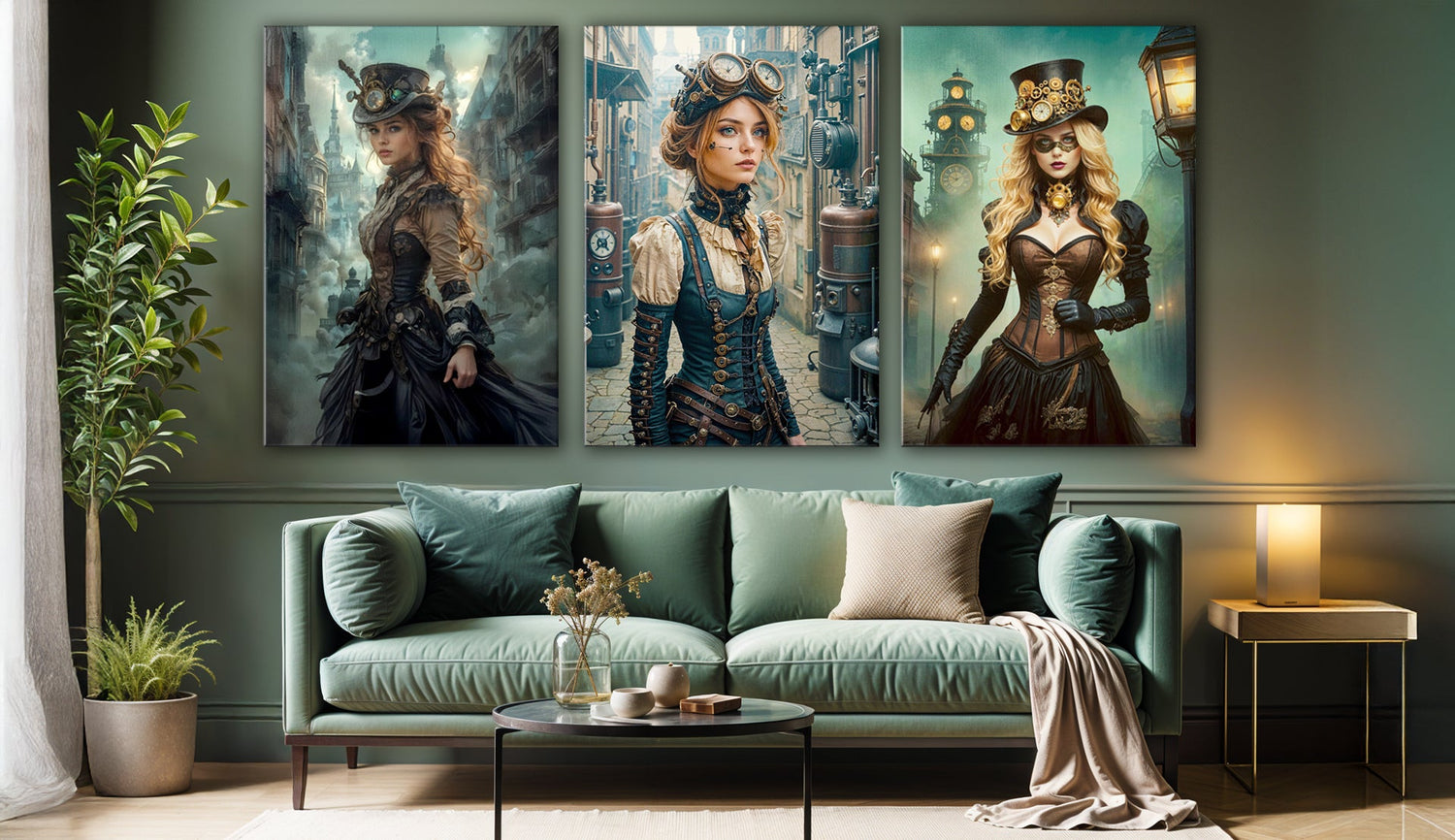
Ink, Silk, and Sword: Aesthetic Fusion Explained
Design Speaking in Layers
Any well-designed room's artwork on the wall shapes the energy, frames the mood, and tells part of the homeowner's story, so it transcends merely filling a space. But the Geisha-Samurai Canvas Collection tells that visual narrative in a language all their own, a kind of fusion dialect where ink meets silk and symbol meets structure.
What shows on these canvases is more than mere decoration. Visual traditions and modern aesthetics are deliberately interacting. If you have ever stopped before one and wondered, Why does this feel so balanced? So striking, this is your deep dive.
Let's examine the components—color, contrast, flow, and form—that provide this series its arresting but sophisticated visual identity.
Silk as Symbol and Surface
Across the collection, one of the most consistent textures is silk—represented in rich digital folds, brocade-like patterns, or minimalist fabrics that ripple subtly in grayscale. These visual references to kimono fabric aren’t incidental; they anchor the composition and act as a soft foil to the harder lines of weaponry or posture.
The way the canvas texture itself—a responsibly sourced cotton-poly blend (300–350 gsm)—plays with this illusion is fascinating. The somewhat tactile surface of the canvas wall art grounds the kimono, which seems soft. The end effect is a dual-layered reading: delicate in look but real in presence.
This type of textural mimicry performs best in interior environments where softness and utility are in balance—reading nooks, sitting rooms, or transitional areas like hallways.
Contrast: Classical Form with a Modern Edge
From a design perspective, the collection's use of visual contrast is among its most fascinating dynamics.
- Light vs. Shadow: A lot of works employ strong chiaroscuro, where darker backgrounds contrast with illuminated faces or weapons. This method naturally attracts the eye and produces a cinematic effect, evoking the style of classical oil painting.
- Structure vs. Softness: Draped cloth and flowing hair frequently encircle the sharp edges of a gaze, parasol, or katana. In addition to being aesthetically pleasing, the tension here reflects the larger themes of feminine duality found in all of the pieces.
- Tradition vs. Modernity: While some pieces of art have a focus on cyberpunk or tattoo culture, others directly reference traditional ukiyo-e style through floral motifs or simple color schemes.
This deliberate balancing act allows each fine print to feel timeless and contemporary—fitting for both a loft in Tokyo and a minimalist studio in Brooklyn.

Visual Flow and Movement
The directionality may be the first thing that catches your attention when you take a step back and examine one of these canvas art wall decor prints. A subtle sense of movement, not in the literal sense, but in the way the eye is drawn across the frame, can be found in many pieces of art.
This is achieved through:
- Diagonal composition: The viewer's eye is drawn from corner to corner by the diagonal pull created by swords, shoulders, and even snowfall.
- Implied motion: Falling petals or billowing fabric imply that something has just occurred or will soon occur.
- Center of gravity: Although figures are frequently asymmetrical, they are never unsteady, which adds a sense of tension and elegant poise.
This visual energy is probably what gives the collection its versatility for different spaces. Diagonals, for example, create the illusion of more space and are perfect for vertical gallery walls or small entryways.
Color as Emotional Cue
A surprising takeaway for many viewers is how emotionally distinct each print feels—even though the visual elements are so cohesive. Much of this emotional coding comes from the color palettes.
- Mild tones: Off-whites, gentle blues, or dusty grays are used to depict snow scenes and temple backgrounds, making them ideal for peaceful settings like meditation nooks or bedrooms.
- Vibrant reds and golds: These stand out in pieces that involve ritual or confrontation, which makes them ideal focal points for home offices or statement walls.
- Neutrals and metallics: Used sparingly, often in tattoos or weapons, these lend the prints a subtly modern edge that makes them highly compatible with industrial or urban interiors.
That versatility isn’t accidental—it’s designed. And because the canvas prints are available in 26 sizes, with both 2cm and 4cm thickness options, you can match the emotion of the piece with the impact you want it to have in your room.
Design That’s Durable
Beyond the visual poetry, each geisha canvas wall art piece is made to stand the test of time:
- FSC-certified wood for sturdy, sustainable stretchers
- Cotton-poly blend canvas for strength with softness
- On-demand production to reduce waste
- Included hanging kits, customized by region, for easy installation
Whether you prefer unframed wall art prints or mounted canvas wall art for living room styling, this collection bridges the gap between gallery-quality aesthetics and real-life decor needs.
Elevate Your Visual Storytelling
To appreciate these art prints is to look beyond surface beauty. These pieces aren’t just pleasing—they’re structured to say something. And what they say will shift slightly depending on where you place them, what they’re near, and how you frame them—visually or conceptually.
If you’re building a space that reflects both your taste and your values, this collection offers a unique opportunity to do just that.







